GAS
As the global climate crisis intensifies while the production of gas soars, it is clearer than ever that gas must be phased out together with coal and oil. In contrast to industry claims that gas can be a bridge fuel in the clean energy transition, our analysis consistently shows that gas is NOT clean, cheap, or necessary.
Below are a collection of resources on gas that include reports, blogs, and action opportunities.
Read the latest report ?
Take action ?
WHY WE WORK ON GAS
Since 2000, global gas production has grown over 50%. The expansion of fracking in the United States has played a leading role in this growth, with U.S. production growing over 60%. The U.S. fracked gas boom has left a trail of destruction in its wake, with pipelines, compressor stations, storage terminals, LNG export terminals, and sand mining pits adding to the thousands of wells that scar the landscape, and threaten communities and climate.
With global gas production estimated to grow a further 20 to 40 percent within the next two decades, the fossil fuel industry pedals a myth that somehow this massive expansion of fossil gas and associated infrastructure is helping to solve the climate crisis. We work to debunk this “bridge fuel” myth with our analysis, reporting, and advocacy.
GAS REPORTS & ANALYSIS
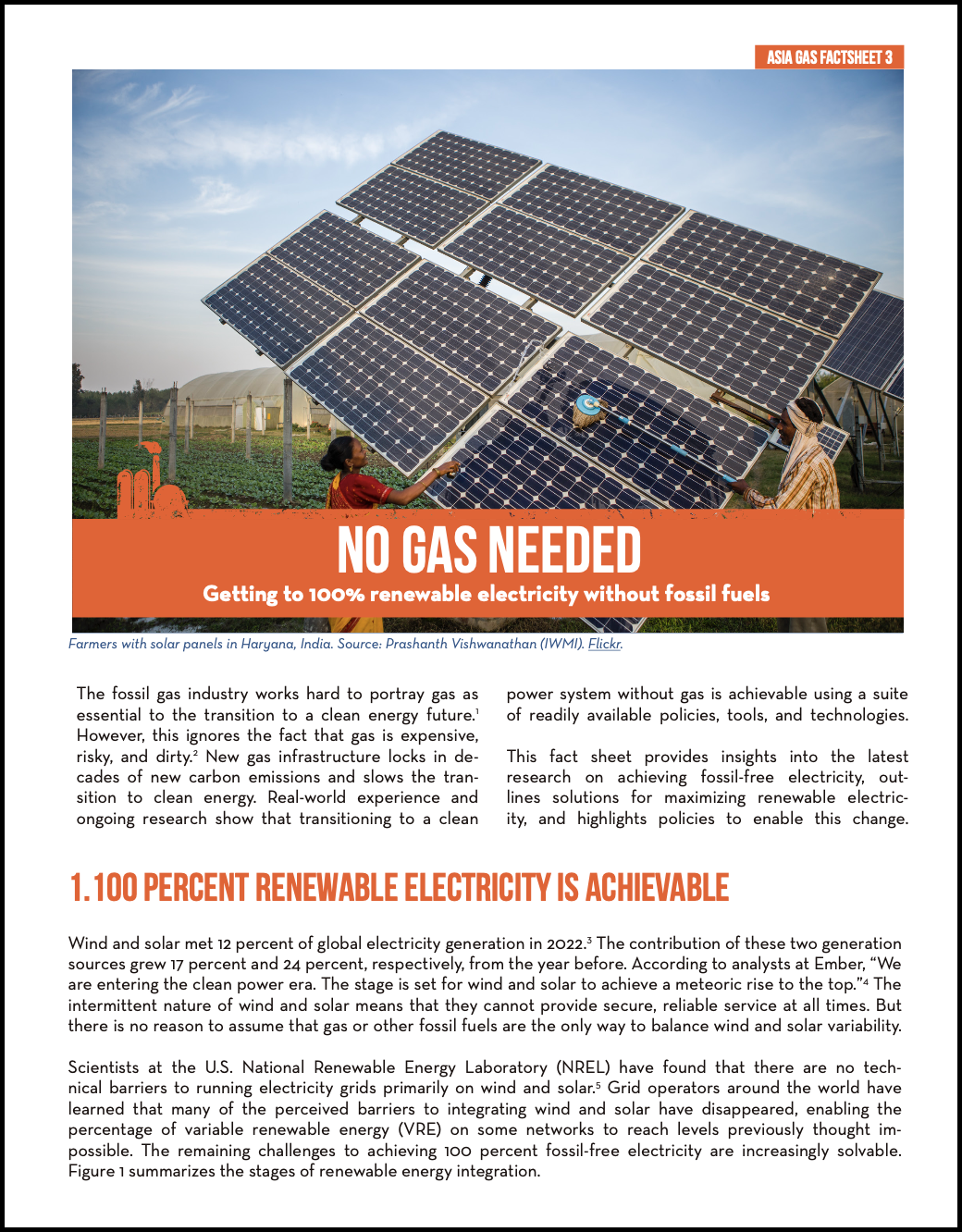 Asia Gas Factsheet #3: No Gas Needed
Asia Gas Factsheet #3: No Gas Needed
Despite industry claims, the simple fact is that gas is expensive, risky, and dirty. Real-world experience and ongoing research show that transitioning to a clean power system without gas is achievable using a suite of readily available policies, tools, and technologies.
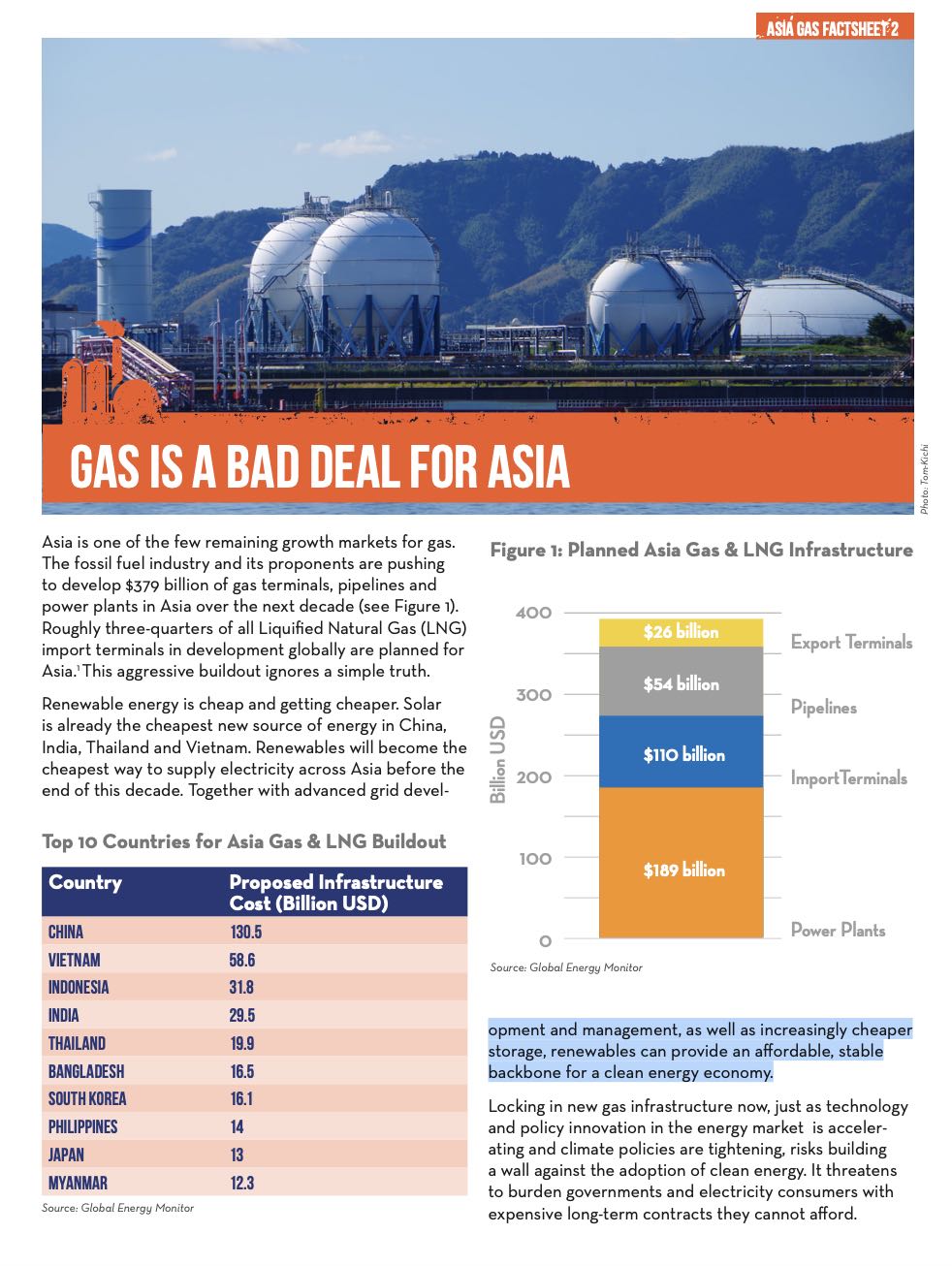 Asia Gas Factsheet #2: Gas Is A Bad Deal For Asia
Asia Gas Factsheet #2: Gas Is A Bad Deal For Asia
Asia is one of the few remaining growth markets for gas. The fossil fuel industry and its proponents are pushing to develop $379 billion of gas terminals, pipelines and power plants in Asia over the next decade. This aggressive buildout ignores a simple truth. Renewable energy is cheap and getting cheaper.
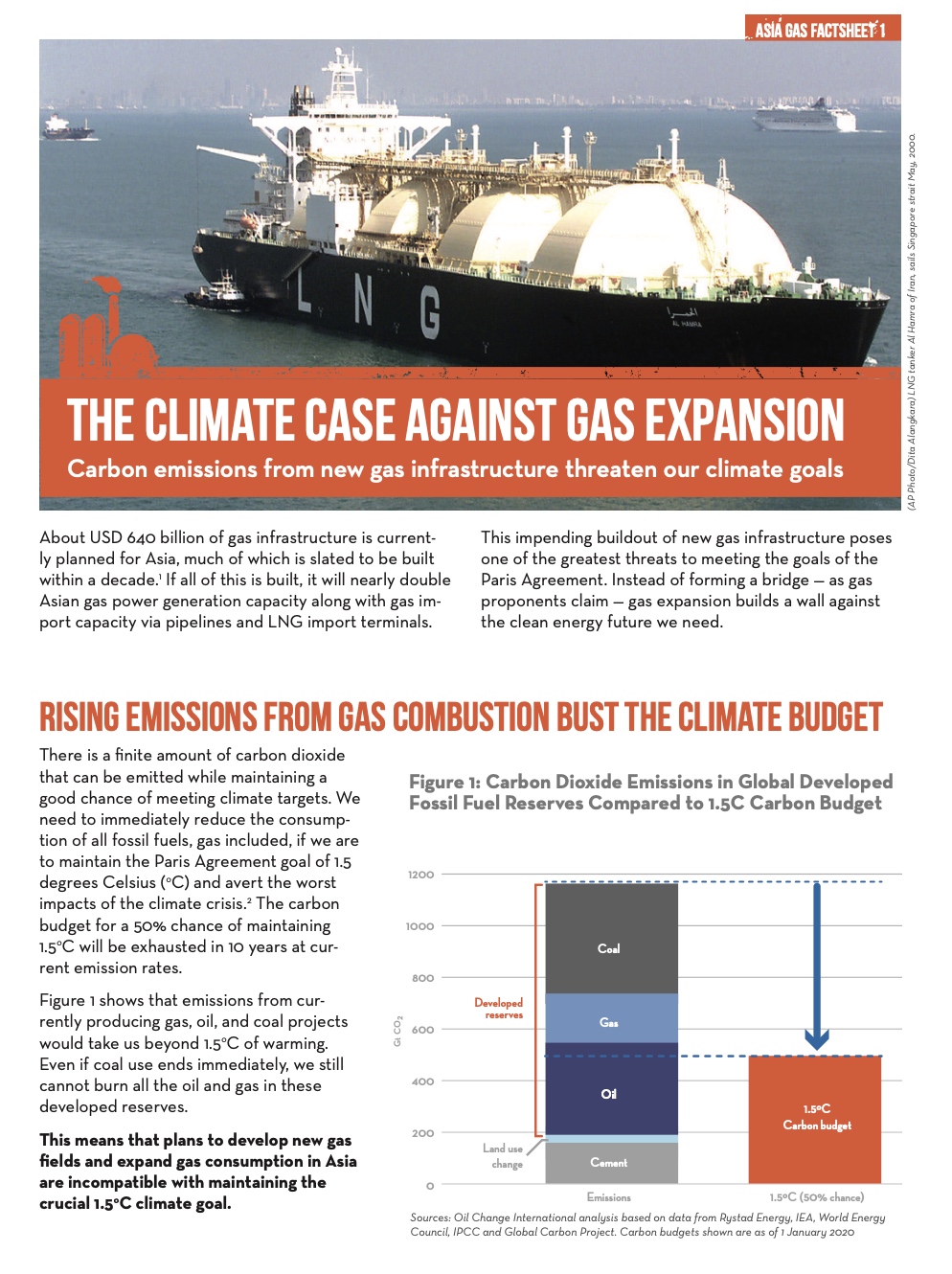 Asia Gas Factsheet #1: The Climate Case Against Gas Expansion
Asia Gas Factsheet #1: The Climate Case Against Gas Expansion
This impending buildout of new gas infrastructure poses one of the greatest threats to meeting the goals of the Paris Agreement. Instead of forming a bridge — as gas proponents claim — gas expansion builds a wall against the clean energy future we need.
 Burning the Gas ‘Bridge Fuel’ Myth: Why Gas Is Not Clean, Cheap, Or Necessary
Burning the Gas ‘Bridge Fuel’ Myth: Why Gas Is Not Clean, Cheap, Or Necessary
This report makes the case that gas is not a ‘bridge fuel’ to a safe climate. As the global climate crisis intensifies and gas production and consumption soars, it is clearer than ever that gas is not a climate solution.
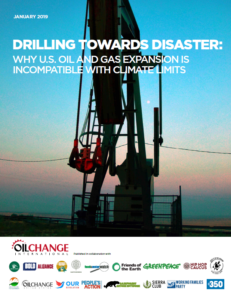 Drilling Towards Disaster: Why U.S. Oil and Gas Expansion Is Incompatible with Climate Limits
Drilling Towards Disaster: Why U.S. Oil and Gas Expansion Is Incompatible with Climate Limits
At precisely the time in which the world must begin rapidly decarbonizing to avoid runaway climate disaster, the United States is moving further and faster than any other country to expand oil and gas extraction.
 Gas and the European Investment Bank: Why New Gas Infrastructure Investment Is Incompatible with Climate Goals
Gas and the European Investment Bank: Why New Gas Infrastructure Investment Is Incompatible with Climate Goals
As the financial arm of the EU, the EIB has a mandate to act in the public interest. Despite this, the EIB continues to invest heavily in gas infrastructure.
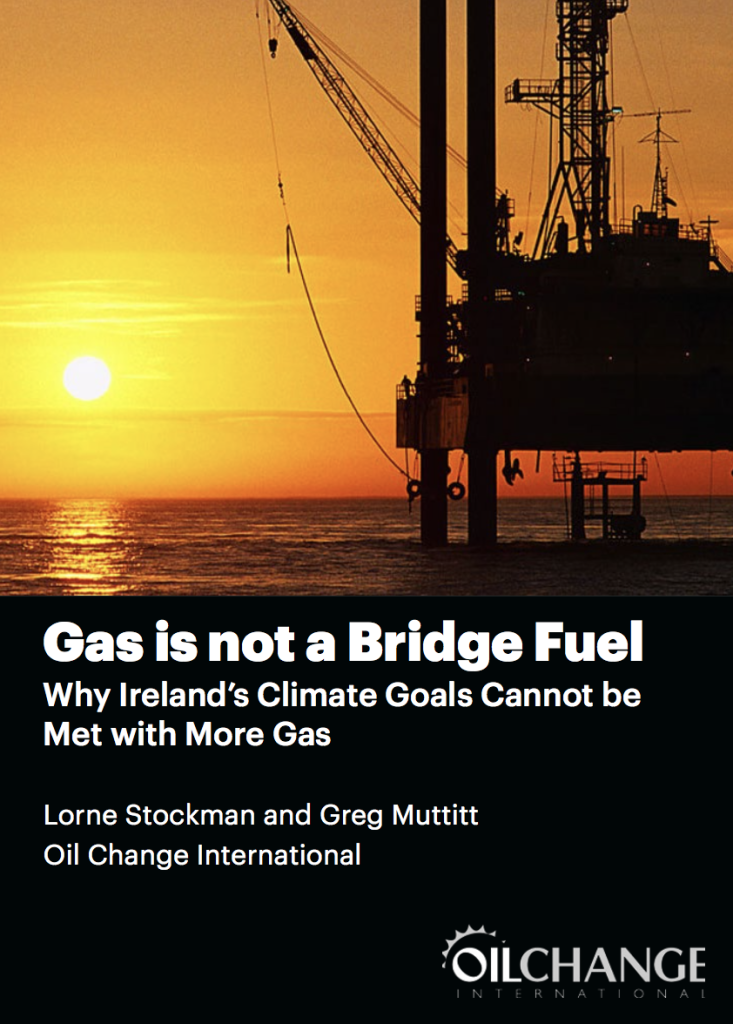 Gas Is Not a Bridge Fuel: Why Ireland’s Climate Goals Cannot Be Met with More Gas
Gas Is Not a Bridge Fuel: Why Ireland’s Climate Goals Cannot Be Met with More Gas
Ireland is on course to miss both its short-term climate commitments within EU legislation. Expanded gas extraction will only make it more difficult to achieve these goals, and must be avoided in order to achieve a safe climate future.
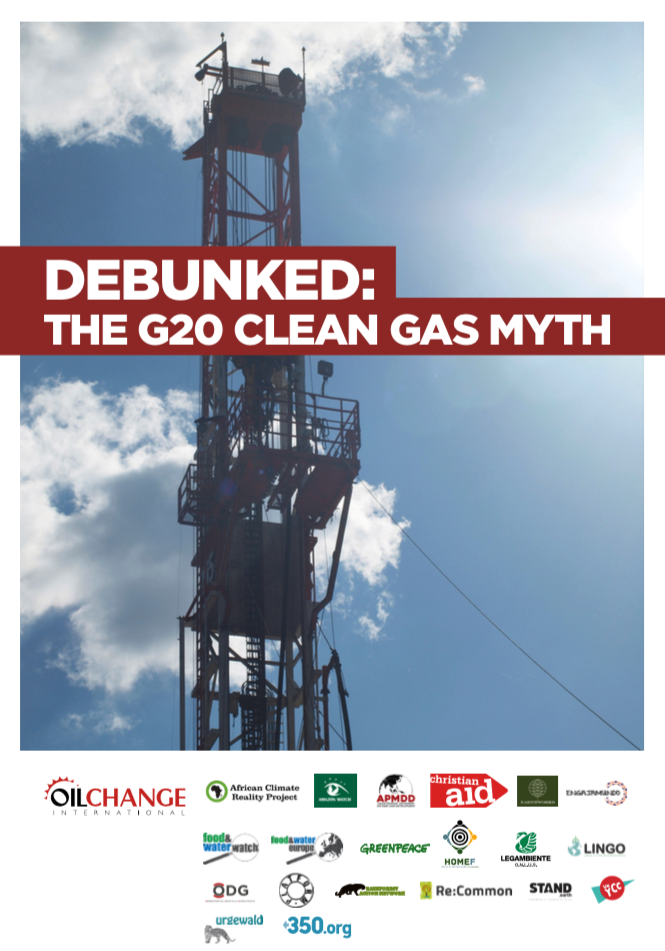 Debunked: The G20 Clean Gas Myth
Debunked: The G20 Clean Gas Myth
This report focuses on fossil gas development in the G20 and debunking the myth of fossil gas as a clean transition fuel.
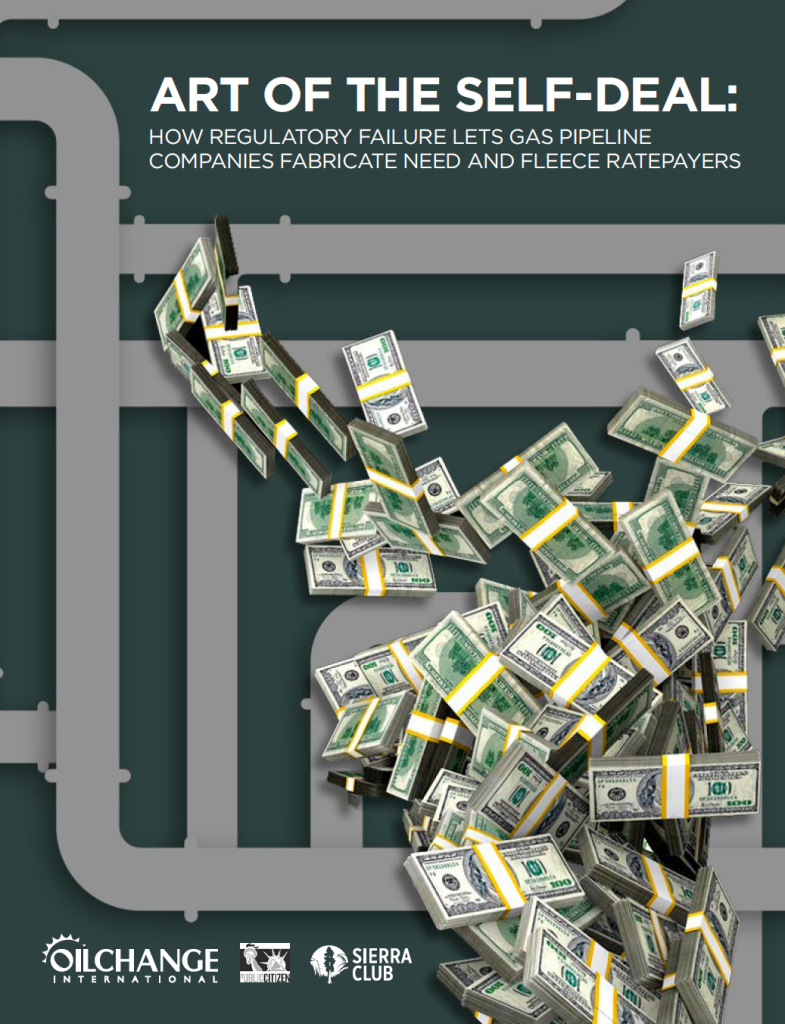 Art of the Self-Deal: How Regulatory Failure Lets Gas Pipeline Companies Fabricate Need and Fleece Ratepayers
Art of the Self-Deal: How Regulatory Failure Lets Gas Pipeline Companies Fabricate Need and Fleece Ratepayers
This report examines how a new wave of gas pipeline construction threatens to shunt serious risks and costs on to utility ratepayers.
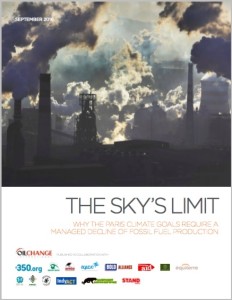 The Sky’s Limit: Why the Paris Climate Goals Require a Managed Decline of Fossil Fuel Production
The Sky’s Limit: Why the Paris Climate Goals Require a Managed Decline of Fossil Fuel Production
This report scientifically grounds the growing movement to keep carbon in the ground by revealing the need to stop all new fossil fuel infrastructure and industry expansion.
 A Bridge Too Far: How Appalachian Basin Gas Pipeline Expansion Will Undermine U.S. Climate Goals
A Bridge Too Far: How Appalachian Basin Gas Pipeline Expansion Will Undermine U.S. Climate Goals
This report shows that current projections for U.S. natural gas production – fueled by a boom in the Appalachian Basin – will lock in enough carbon to bust through agreed climate goals.
PROJECT ANALYSIS
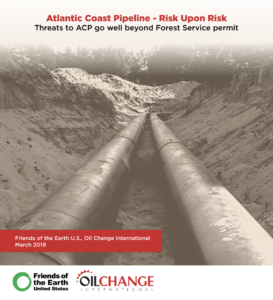 Atlantic Coast Pipeline – Risk Upon Risk
Atlantic Coast Pipeline – Risk Upon Risk
The ACP is facing a triple threat of challenges that combine to present serious obstacles for the project to reach completion. It would be prudent for investors to question whether pursuing the project further is a wise use of capital.
 The Vanishing Need for the Atlantic Coast Pipeline
The Vanishing Need for the Atlantic Coast Pipeline
Diminishing consumer demand coupled with more affordable renewables are casting doubt on the overall feasibility and potential profitability of the Atlantic Coast Pipeline.
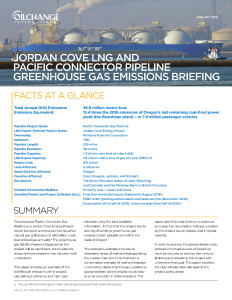 Jordan Cove LNG and Pacific Connector Pipeline Greenhouse Gas Emissions
Jordan Cove LNG and Pacific Connector Pipeline Greenhouse Gas Emissions
The proposed Jordan Cove LNG export terminal and Pacific Connector pipeline would be a substantial source of climate pollution for decades to come.
 The Rover Pipeline: Greenhouse Gas Emissions Briefing
The Rover Pipeline: Greenhouse Gas Emissions Briefing
We find that the Rover Pipeline would lead to annual emissions of nearly 145 million metric tons of carbon dioxide equivalent.
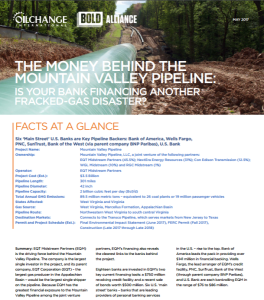 The Money Behind the Mountain Valley Pipeline: Is Your Bank Financing Another Fracked-Gas Disaster?
The Money Behind the Mountain Valley Pipeline: Is Your Bank Financing Another Fracked-Gas Disaster?
This analysis examines the banks that are in line to finance the Mountain Valley Pipeline, a 301-mile, $3.5 billion fracked-gas project.
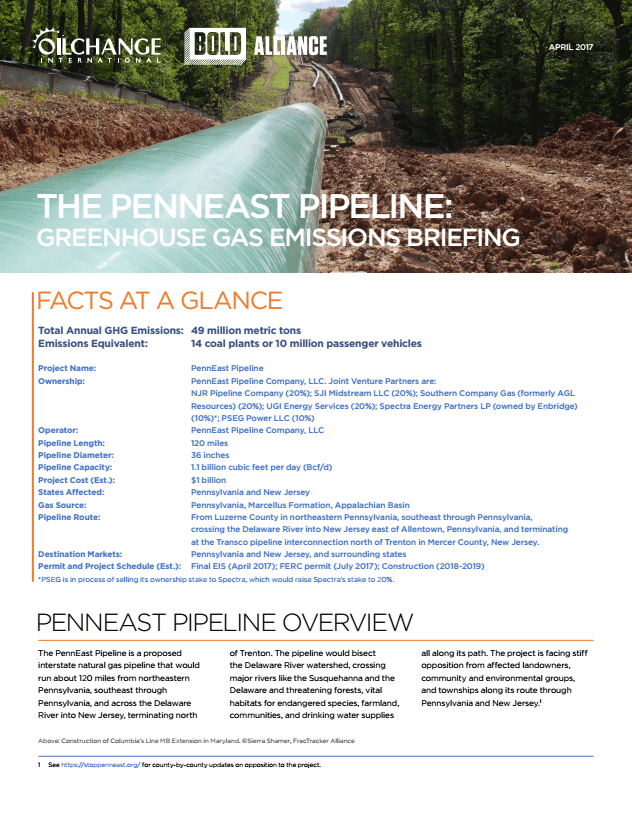 The PennEast Pipeline: Greenhouse Gas Emissions Briefing
The PennEast Pipeline: Greenhouse Gas Emissions Briefing
This analysis finds that the PennEast Pipeline would result in the emissions equivalent the 14 coal plants, or 10 million passenger vehicles.
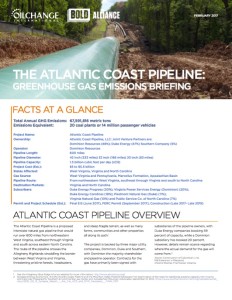 The Atlantic Coast Pipeline: Greenhouse Gas Emissions Briefing
The Atlantic Coast Pipeline: Greenhouse Gas Emissions Briefing
This analysis finds that the Atlantic Coast Pipeline would cause the emissions equivalent of 20 coal plants, or 14 million passenger vehicles.
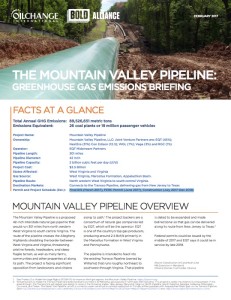 The Mountain Valley Pipeline: Greenhouse Gas Emissions Briefing
The Mountain Valley Pipeline: Greenhouse Gas Emissions Briefing
This analysis finds that the Mountain Valley Pipeline would cause the emissions equivalent of 26 coal plants, or 19 million passenger vehicles.
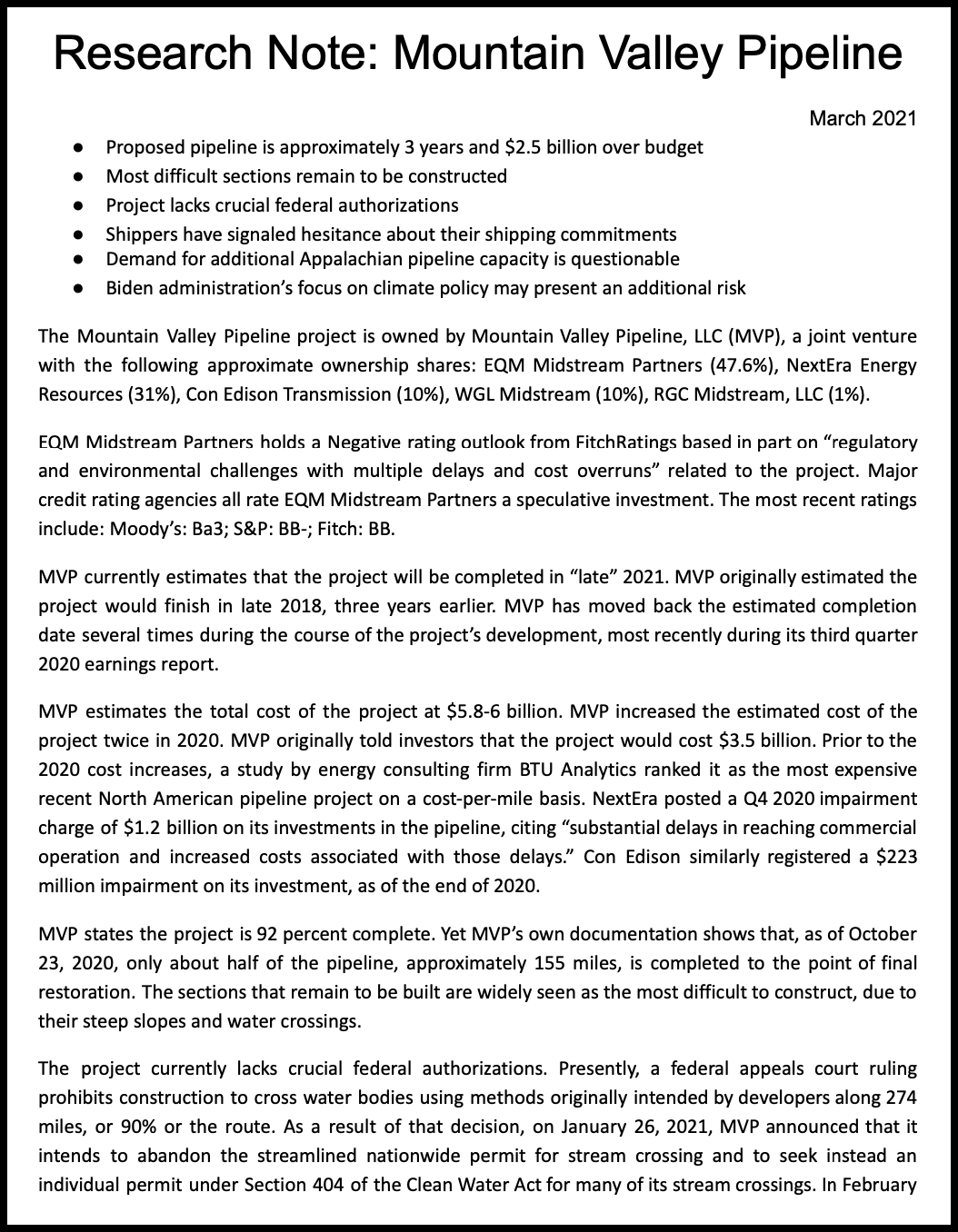 The Mountain Valley Pipeline: Research Note
The Mountain Valley Pipeline: Research Note
We summarize the most significant financial and climate risks to building the Mountain Valley Pipeline.
LATEST GAS POSTS
Asia is one of the few remaining growth markets for gas. The fossil fuel industry and its proponents are pushing to develop $379 billion of gas terminals, pipelines and power plants in Asia over the next decade. Roughly three-quarters of all Liquified Natural Gas (LNG) import terminals in development globally are planned for Asia. This aggressive buildout ignores a simple truth.
This impending buildout of new gas infrastructure poses one of the greatest threats to meeting the goals of the Paris Agreement. Instead of forming a bridge — as gas proponents claim — gas expansion builds a wall against the clean energy future we need.
More than 500 organizations called on policymakers in the U.S. and Canada to reject Carbon Capture and Storage (CCS) as a dangerous distraction and to end the "carbon capture of climate policy."
The plan leaves the door open for new gas finance and keeps existing loopholes for continued support for all fossil fuels.
The API claims gas is the main reason US power sector emissions are down. Our latest analysis shows it's not.
A detailed analysis by Oil Change International of the public statements and commitments by the American Petroleum Institute (API) around methane emissions and climate change has uncovered a decade of spurious data, deceptive messaging, and disingenuous public positioning by the big oil spin doctors.
A new study published last week confirms what we already knew about oil and gas in the Permian Basin. It's an unmitigated disaster.
The third and final installment in a series of blogs on the IEA's Special Report on gas and energy transitions. This blog discusses the IEA's analysis of methane leakage and its faith in carbon capture and storage.



